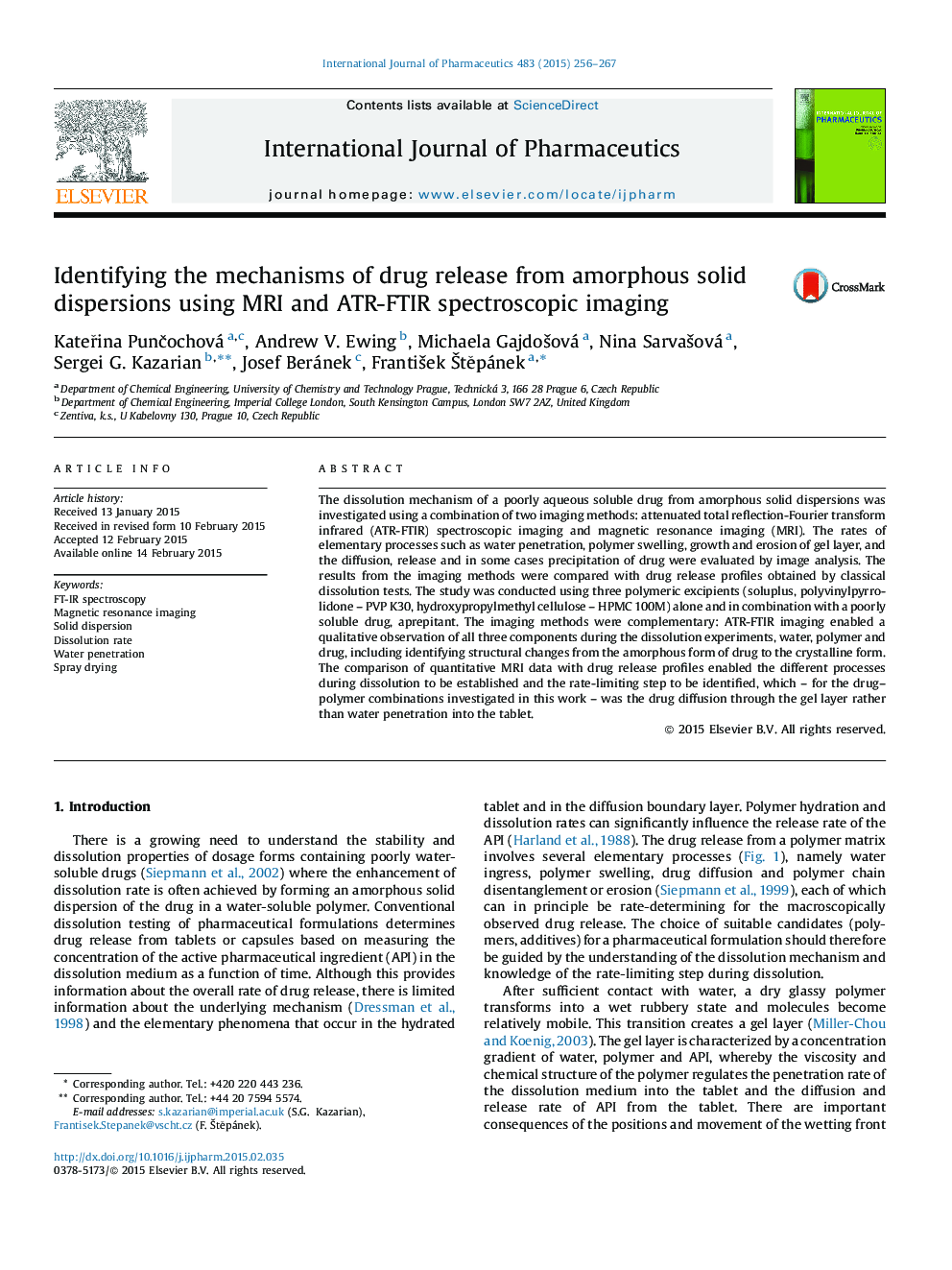| Article ID | Journal | Published Year | Pages | File Type |
|---|---|---|---|---|
| 2501491 | International Journal of Pharmaceutics | 2015 | 12 Pages |
The dissolution mechanism of a poorly aqueous soluble drug from amorphous solid dispersions was investigated using a combination of two imaging methods: attenuated total reflection-Fourier transform infrared (ATR-FTIR) spectroscopic imaging and magnetic resonance imaging (MRI). The rates of elementary processes such as water penetration, polymer swelling, growth and erosion of gel layer, and the diffusion, release and in some cases precipitation of drug were evaluated by image analysis. The results from the imaging methods were compared with drug release profiles obtained by classical dissolution tests. The study was conducted using three polymeric excipients (soluplus, polyvinylpyrrolidone – PVP K30, hydroxypropylmethyl cellulose – HPMC 100M) alone and in combination with a poorly soluble drug, aprepitant. The imaging methods were complementary: ATR-FTIR imaging enabled a qualitative observation of all three components during the dissolution experiments, water, polymer and drug, including identifying structural changes from the amorphous form of drug to the crystalline form. The comparison of quantitative MRI data with drug release profiles enabled the different processes during dissolution to be established and the rate-limiting step to be identified, which – for the drug–polymer combinations investigated in this work – was the drug diffusion through the gel layer rather than water penetration into the tablet.
Graphical abstractFigure optionsDownload full-size imageDownload high-quality image (184 K)Download as PowerPoint slide
